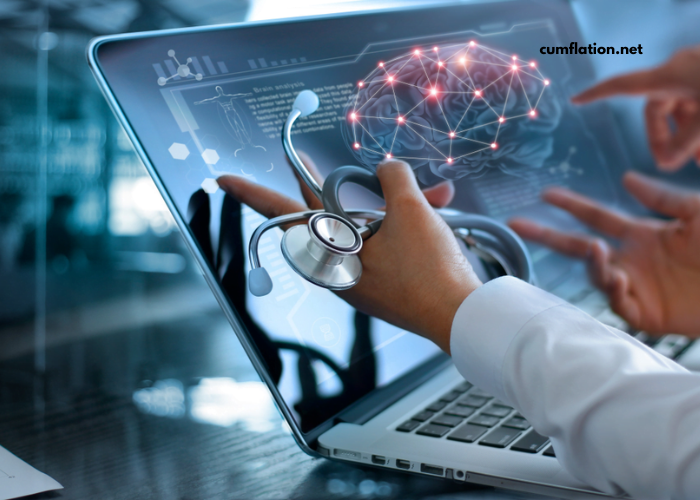Innovative Health Technologies for Better Living
JESSICA DEABREU January 24, 2025
In the fast-evolving world of healthcare, technological advancements are transforming how we approach health and wellness. From wearable devices to artificial intelligence (AI) applications, these innovations not only improve the quality of medical care but also enhance the daily lives of individuals. As people continue to prioritize their health and well-being, innovative health technologies play a pivotal role in providing personalized, efficient, and effective solutions. This article explores some of the groundbreaking health technologies that are shaping a healthier future for all.
The Rise of Wearable Health Devices
Wearable health devices have revolutionized the way people monitor their health. These gadgets, often in the form of wristwatches, rings, or patches, track various physiological data such as heart rate, sleep patterns, physical activity, and even blood oxygen levels. The integration of sensors and mobile applications enables real-time monitoring, providing users with valuable insights into their health status.
Smartwatches and Fitness Trackers
Smartwatches like the Apple Watch, Fitbit, and Garmin have become more than just timepieces; they are comprehensive health monitors. With built-in sensors, these devices track steps, calories burned, heart rate variability, sleep quality, and stress levels. Many models also offer features like ECG (electrocardiogram) readings, blood oxygen monitoring, and even fall detection, which can be life-saving in emergency situations.
Fitness trackers are similarly designed to motivate users to stay active. They offer features such as daily activity goals, workout tracking, and integration with nutrition apps, making it easier to manage overall health.
Wearable Health Patches
Health patches, like those from companies such as VitalConnect and iRhythm, monitor patients’ vital signs continuously. These patches are particularly useful for people with chronic conditions like cardiovascular disease or diabetes, as they provide a non-invasive way to track health metrics. Wearable patches can send data directly to healthcare providers, enabling remote monitoring and proactive care.
Artificial Intelligence in Healthcare
Artificial intelligence is making waves in the healthcare industry by providing predictive analytics, improving diagnostic accuracy, and personalizing treatment plans. By processing vast amounts of data from medical records, imaging scans, and clinical trials, AI can offer insights that humans may overlook.
AI-Powered Diagnostics
AI has shown remarkable promise in diagnostic fields, particularly in radiology. AI algorithms are now able to analyze medical imaging such as X-rays, MRIs, and CT scans with incredible precision. For example, AI can detect early-stage cancer or identify fractures that a human eye might miss. In some cases, AI systems are already outpacing doctors in terms of accuracy, leading to faster and more reliable diagnoses.
AI also plays a role in analyzing genetic data. With advancements in genomics, AI can help predict genetic predispositions to certain diseases, enabling early interventions and tailored treatment strategies.
Virtual Health Assistants
Virtual health assistants, powered by AI, are becoming an integral part of the healthcare ecosystem. These digital assistants use natural language processing (NLP) to interact with patients, providing them with personalized health advice, answering medical questions, and even assisting with medication reminders.
For instance, IBM Watson Health offers virtual assistants that help doctors and patients by analyzing large amounts of medical literature and offering evidence-based suggestions. These systems can also schedule appointments, access medical records, and manage administrative tasks, allowing healthcare providers to focus more on patient care.
Telemedicine: Healthcare Anytime, Anywhere
Telemedicine, or remote healthcare services, has grown exponentially, especially during the COVID-19 pandemic. With telemedicine, patients can consult with healthcare professionals from the comfort of their homes, reducing the need for in-person visits and offering greater access to care.
Telehealth Platforms
Telehealth platforms like Teladoc and Amwell provide virtual consultations with healthcare providers via video calls, phone calls, or messaging. These platforms are accessible through smartphones, tablets, or computers, making it easy for individuals to seek medical advice without leaving their homes. Telemedicine is particularly beneficial for individuals in rural or underserved areas, where access to healthcare facilities may be limited.
Remote Patient Monitoring (RPM)
Remote patient monitoring (RPM) technologies enable healthcare providers to track patients’ health remotely. RPM systems use sensors and wearables to collect data on various vital signs, such as heart rate, blood pressure, and glucose levels. This data is sent to healthcare providers, who can analyze it in real-time and make timely interventions when necessary.
For example, patients with diabetes can use continuous glucose monitors (CGMs) to track their blood sugar levels throughout the day. This information can be shared with their healthcare team, allowing for more precise management of their condition.
Robotics in Healthcare
Robotic technologies are transforming surgery, rehabilitation, and patient care. From minimally invasive surgeries to robotic exoskeletons, these innovations are improving the precision of medical procedures and enhancing recovery times.
Robotic Surgery
Robotic surgery systems, such as the Da Vinci Surgical System, allow surgeons to perform minimally invasive procedures with greater precision and control. These systems consist of robotic arms that are controlled by a surgeon using a console. The arms are equipped with high-definition cameras and specialized instruments, enabling surgeons to make small incisions while performing complex surgeries.
The benefits of robotic surgery include reduced pain, shorter hospital stays, faster recovery times, and less scarring. These technologies are being used for a variety of procedures, including prostate surgeries, heart surgeries, and gynecological operations.
Robotic Exoskeletons for Rehabilitation
Robotic exoskeletons are wearable devices designed to help individuals with mobility impairments regain their ability to walk. These exoskeletons use motors and sensors to assist with movement and provide support for people with spinal cord injuries, strokes, or other conditions that affect their mobility.
One notable example is the ReWalk, a wearable robotic exoskeleton that helps individuals with paraplegia stand and walk. These devices have the potential to significantly improve the quality of life for people with mobility challenges, allowing them to regain independence and reduce the physical strain associated with traditional wheelchairs.
Precision Medicine: Tailoring Treatments to the Individual
Precision medicine is an emerging approach to healthcare that takes into account an individual’s genetic makeup, environment, and lifestyle to deliver personalized treatments. Rather than using a one-size-fits-all model, precision medicine aims to provide therapies that are specifically suited to each patient.
Genomic Sequencing
One of the key components of precision medicine is genomic sequencing. By analyzing a patient’s genetic code, doctors can identify genetic mutations and predispositions to certain diseases, such as cancer, heart disease, and diabetes. This information can be used to customize treatment plans and select the most effective medications.
For example, genetic testing can help determine which cancer treatments are most likely to be successful for a particular patient based on their unique genetic profile. Similarly, genomic sequencing can reveal potential drug interactions and adverse effects, allowing doctors to avoid certain medications that may not be suitable for the patient.
Personalized Cancer Treatments
Precision medicine is making significant strides in cancer treatment. Targeted therapies are designed to target specific cancer cells based on their genetic characteristics, minimizing damage to healthy cells. Immunotherapies, which harness the body’s immune system to fight cancer, are also part of the precision medicine approach.
For instance, CAR-T cell therapy is a groundbreaking treatment that involves modifying a patient’s T cells to better recognize and attack cancer cells. This innovative treatment has shown promise in treating certain types of blood cancers, such as leukemia and lymphoma.
Blockchain Technology in Healthcare
Blockchain, the technology behind cryptocurrencies like Bitcoin, is finding its way into healthcare. Blockchain’s secure, transparent, and decentralized nature makes it ideal for managing healthcare data and improving the integrity of medical records.
Secure Medical Records
Blockchain can help safeguard patient data by providing a secure, tamper-proof platform for medical records. Instead of relying on centralized databases, which can be vulnerable to hacks, blockchain stores data across a distributed network, ensuring that only authorized individuals can access sensitive information.
This technology has the potential to streamline healthcare workflows, improve data accuracy, and reduce fraud. It also makes it easier for patients to manage their own health records and share them with multiple healthcare providers.
Supply Chain Management
Blockchain technology can also improve the healthcare supply chain by ensuring the authenticity and traceability of drugs and medical devices. By using blockchain to track the movement of pharmaceuticals, manufacturers, distributors, and healthcare providers can reduce the risk of counterfeit drugs and ensure the safe delivery of medications to patients.
Conclusion
Innovative health technologies are revolutionizing the way we manage and improve our health. From wearable devices that track daily activity to artificial intelligence that enhances diagnostic accuracy, these advancements are making healthcare more personalized, efficient, and accessible. As these technologies continue to evolve, they hold the potential to transform the future of medicine, improving the quality of life for millions of people around the world.
The ongoing integration of these innovations into everyday life suggests that a future with better, more accessible healthcare is within reach. By embracing these advancements, individuals and healthcare providers can work together to create a healthier world for generations to come.




